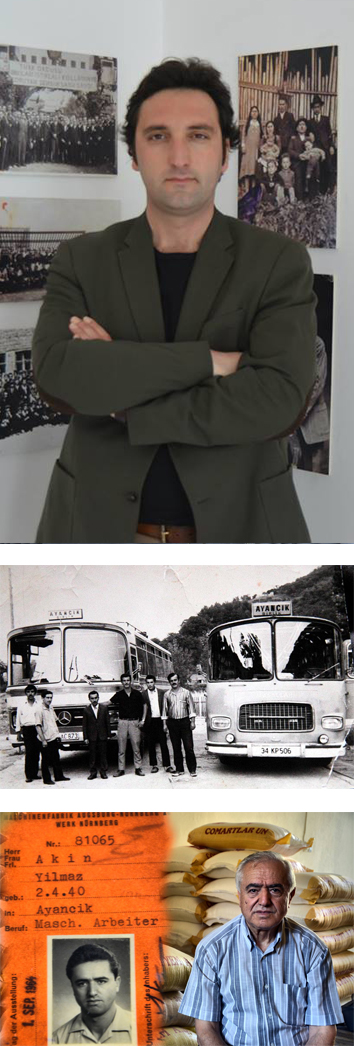 Biography:
Biography:
Volkan Atilgan was born in Istanbul in 1980. Atilgan, whose interest in photography has grown bigger since childhood, worked in the field of tourism in different positions after completing his secondary education in 1997 with a degree from Kutahya Tourism Education Center. Atilgan who worked as the manager of Amasya Doctor’s Association Club for one year in 1999, has been in charge of a professional photo studio since June 2001 for over 14 years in Ayancik district of Sinop.
Atilgan organizes workshops and photo safaris for the city of Sinop in which he resides and is deeply attached to and for photography amateurs in Ayancik. He also supports the Ayancik Music Society in which he was one of the founders in 2012 and actively takes part in organizations for the protection and revival of traditional musical heritage in the city.
While being a photographer who was also the owner of a photography shop, Atilgan’s interest in social history tuned him into local history researcher. He created a project to exhibit the old family photos of the residents of Ayancik on social media. This journey he embarked on suddenly got transformed into a social responsibility project in the form of a mobile urban memory titled Wooden Screens “An Ayancik Documentary,” both as a result of the interest shown in the project and the magnitude and the wealth of the photos displayed.
Atilgan also maintains a voluntary individual effort and contribution towards the promotion of local geography and tourism in the region through social media.
Exhibition: Tarabalar
Envision a country;
Where people find their hopes in the greens of a forest and where they spill their pain into the deep blues of the sea!!
Ayancik!
The process in Ayancik began in the first years of the Republic in when the forests in Ayancik and the surrounding areas were transformed into the world’s second largest and Turkey’s largest timber factory which was allowed to become a reality thanks to the German and Belgian capital. Many foreign trained immigrants Ayancik received to work in the factory resulted in an era which the inhabitants of the country in many cities could not even imagine in their dreams during the early years of the Republic.
Due to the existence of the factory, electric power started to be used in the town center and in certain areas since the first years of the Republic. The foreign population which began to live in Ayancik in those years diversified the cultural and socio-economic life of the local people of Ayancik and served as the cornerstone of modernization. European fashions of those years, sometimes even before they came to the big city, came to Ayancik; foreign language education was offered in schools, and sporting and cultural activities continued unabated. The first soccer goal net in the world made out of wooden nets, the tennis courts, the women’s basketball team, the all-female orchestra, costumed balls, wooden screens from past to present are among the striking images from the archives of “An Ayancık.
In the years when green meant hope, after the factory’s closing, the stagnating social and especially economic life, witnessed people first emigrating to large cities in the country, and then with the trend of immigrating abroad that took place in the 1960s, emigrating from Ayancik district and the city of Sinop to foreign countries.
The journey of hope which began with tears dropping into the blue of the sea started with phrases such as “I go abroad to remain for five-years, save money, then I return”. Divided families resulted in fathers going abroad to save money but could never achieve enough to return back, husbands who forgot their families in Turkey and set up a new life in those countries, and women who got left behind and watched the road with hopeful eyes while their lives got wasted away by raising children and taking care of their elderly.
Sometimes it happened that promises were kept and people returned home but not only with money saved but with lives changed and with sufferings, aspirations, and desperations.
These challenges suffered by those who started these journeys with sweet dreams; and the road stories of lives that got better or fell apart and the experiences accumulated by the second generation referred to as “Almancı” who neither belongs there or here and road stories that turned into meeting points of the third generation who only come to Turkey for vacation meet us in ‘My Suitcase Gurbet,’ a written and oral documentary.
This post is also available in: Turkish


 English
English Türkçe
Türkçe